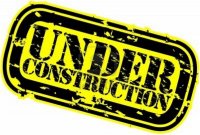Your story architecture
 Going through a complete apartment renovation means I probably have architecture on the mind.
Going through a complete apartment renovation means I probably have architecture on the mind.
But I know I should probably take my story architecture as seriously as I do my home architecture. That’s why I was so happy to see this post on the wonderful Writers in the Storm blog : Figuring out your story’s turning points.
One of the questions authors are often asked in interviews is if they are plotters or pantsers. Do they devise intricate outlines, including character bios, plot turns, simmering tensions boiling below the surface, or do they write and see what emerges?
Although I’d love to say the former describes me perfectly, it would be a flat-out lie. I write by the seat of my pants. I do imagine the story in my mind, and have a general idea of the beginning, end, and where I want the story to go. Although, I’ve done this long enough to know that when I sit down at the keyboard, all my plans are in danger of changing.
BUT that doesn’t mean I can’t learn from the organized plotters, and I loved the premise of this post: how to set up your piece, how to incorporate your first and second turning points, your climax and your resolution – all by pointing out exactly where they should fall in your manuscript.
What do you think, writers? Plotter or pantser? Have you ever constructed your story – and its turning points – this way?
Pantser! Because for me a great part of the joy – and adrenalin – of writing involves facing the unknown.
But after the first draft (I agree with this article!) plotter! Your architecture probably needs refining, rebasing, rewriting.
And yet if we built houses like this! I think our work as writers involves designing – sketching, being architects! – in the beginning. Then pulling everyone into line. Building up.
Love the Elmore Leonard quote!
Good observations, Catherine! There’s an Irish author of psychological thrillers/police novels I like (which says a lot, because I usually don’t like that genre) – Tana French. I was so surprised to read she’s a pantser, too. I was so convinced thriller and mystery writers were meticulous plotters. But she said if she knows the ending beforehand, probably the reader will, too.
Hello, Kimberly 🙂 I’m currently taking a wee hiatus from CC to try and catch up. I’ve missed talking to you though. Another good post!
Plotter or pantser? Ah, the eternal question. I always thought I was a true-blue pantser BUT, just lately, I’m wondering if my entire first draft isn’t merely an elaborate plan. Although I can’t see the ending clearly, I sort of know where it’s all going. And I’m really looking forward to going back and properly colouring the story in.
Perhaps I’m a pantser with elements of plotter? (I have a secret theory that plotters are great at maths and physics and can play a mean game of chess. Which is not me at all! How about you?)
See you later. 🙂
Hi Nicola! Look forward to reading when you’re back. A pantser with plotter tendencies sounds like a perfect combination to me. : ) As for me, not quite on the great at maths and physics, but my chess isn’t bad. : ) Good theory, however!
I’m a plotter but I’m also a pantser while I write…